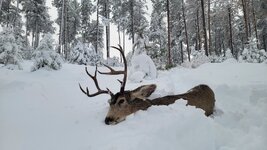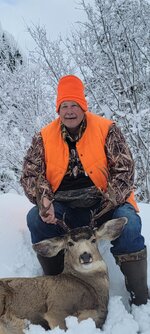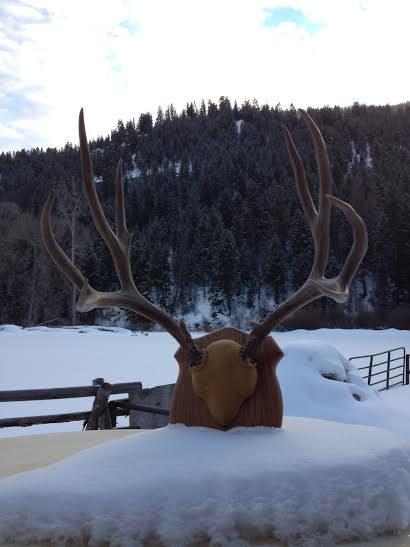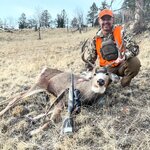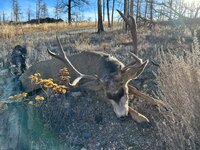Genetics of an area can have the muleys trend bigger or smaller, but that's a trend. And there are almost always exceptions. And definitely take what "guys who've hunted this place a lot of years", and even wildlife biologists' advice, with a grain of salt. Don't dismiss it, but do put an asterisk on it.
It's been my experience that guys who hunt an area yearly, especially if they're local, who say "their ain't no big bucks around here man"...those guys aren't learning much, because they keep doing the same thing over and over, every year, when they keep finding small bucks. Most of what they learned came from their dads and grandpas, and they're just hunting how their family has always hunted - often with a lot of complaining about how good it "used to be." That creates a doom-loop of not believing there's a massive buck somewhere in that unit, so they don't try, or figure out what it takes. They get into a kind of groove of mediocrity. And that is absolutely fine if the goal is meat or just a satisfying hunt. But they don't push themselves to learn, get to tougher places, or how to discipline themselves to pass up smaller bucks. A good marker of that mediocrity in someone who lives close to their regular unit, is whether or not they put in about as many days scouting as they have available in a given season. If they only have a 2-3 week season in September or October, but didn't put in about 10-14 days scouting across the prior 4 or 5 months, they're probably not serious about finding a big buck in that mediocre unit - or really learning how to hunt it. That's a rough benchmark, but it seems to correlate somewhat.
Biologists need an asterisk too, in some places. They're a great resource, but some may just rarely or never see really big bucks when they're herd counting, and it may be hit or miss if they personally see any tagged. Especially if its an area not known for big bucks. They're generally just not looking for those needles in the haystack that intentionally separate themselves from the herds those biologists are counting for big chunks of the year. But do look at the data that comes from harvest reporting - that'll tell you pretty accurately how often something gets taken beyond a 4-point.
Always go into a unit with the belief that there's an absolute banger of a buck in it - and go from there in figuring out how he'd keep himself alive and unseen in that geography, in that context. But as a good general rule, don't pass up a buck on the first day that you'd never pass up on the last day.
One last point on winter kill - I'm not the only one who has noticed that even after a really bad winter, really big bucks seem to have a better than average chance to survive. I suspect it's because they tend to have more body mass to burn through than smaller and younger bucks/does, etc. And the bigger ones seem to also behave differently during the rut, not running around everywhere competing with the 3-4 yo bucks, running them off and trying to ride herd on a half-dozen does at once. Instead, the really big muley bucks seem to often keep above the fray, cut out one doe at a time, keep her up and away from the rest of the nonsense and chaos of the rut, and stay on her until estrus. One at a time. I suspect that burns less calories over the weeks too, so they may be going into winter with both more body mass from maturity, and more retained energy reserves than the younger bucks running around burning it all off just before winter hits. It's not a guaranteed thing, but you can still find some absolute brutes the season after a winter kill that wipes out big portions of a herd.

